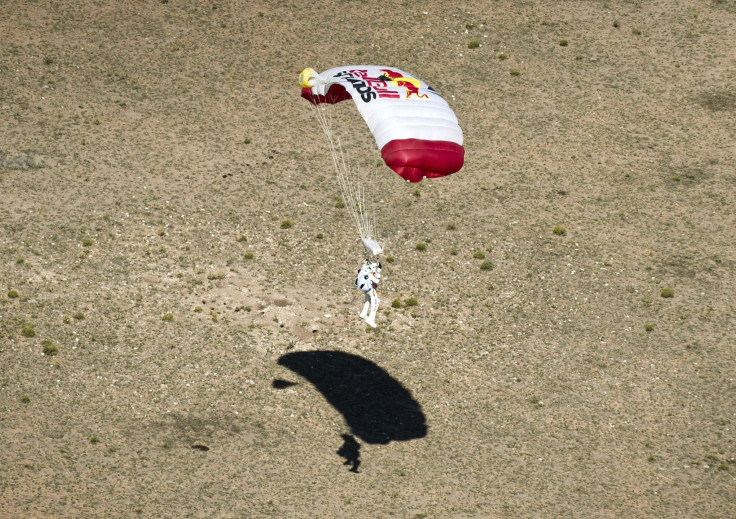'Fearless Felix' Falls Faster Than The Speed Of Sound

Felix Baumgartner leapt from a height no other man has dared, and lived to tell the tale.
The 43-year-old Austrian daredevil set the new record for highest skydive after falling from more than 24 miles in the air. The previous record-holder for fastest and highest skydive, Joseph Kittinger, was on the ground advising Baumgartner as part of the mission, dubbed Red Bull Stratos.
Baumgartner is also the first human being to break the speed of sound with just his body, reaching a speed of 833.9 mph, or Mach 1.24, according to the Associated Press. He also broke the record for highest manned balloon flight, set by U.S. Navy fliers Malcolm Ross and Victor A. Prather in 1961.
The death-defying leap began when Baumgartner lifted off from Roswell, N.M., on Sunday morning, riding in a capsule attached to a 55-story balloon that hoisted him into the stratosphere after an ascent of more than two and a half hours.
“There’s the world out there!” Kittinger crowed as the door of the capsule rolled open at around 128,000 feet.
As Baumgartner stood on the edge of the capsule, the earth below his feet looked featureless and barren.
“I’m going home now,” Baumgartner said as he stepped off.
Shortly after hopping off the capsule, Baumgartner folded into the arrow-like “delta position,” executed to avoid a lateral spin that could create dangerously high g-forces. After free-falling for a little over four minutes, he opened his parachute and landed safely on his feet amongst the scrub brush, nine minutes and three seconds after stepping into the stratosphere.
Baumgartner did not break the record for longest freefall, which Kittinger still holds.
The aim to fall at supersonic speed was only feasible because Baumgartner jumped from the stratosphere, where the air is thinner. Normally, air resistance limits skydivers to a terminal velocity below the speed of sound, because the opposing drag force will equalize the gravitational force. As Baumgartner fell, the local terminal velocity decreases, so he actually slowed in his descent as he neared ground level.
It was unclear before the jump what effect the sonic boom would have on Baumgartner’s physiology. Falling at that speed generates a colossal amount of heat, and a lack of protection could spell disaster.
People across the world followed the historic jump thanks to cameras affixed to Baumgartner’s capsule and suit. The mission, underwritten by energy drink maker Red Bull, is sure to affect how both NASA and private space companies formulate high-altitude escape procedures. The cameras were specially made to function in near-vacuum conditions, extreme temperatures, and bright sunlight, which is much stronger in the upper reaches of the atmosphere.
At a press conference after the jump, Baumgartner thanked his team and looked to the future.
"I want to inspire the next generation," he said. "I want to be in mission control with someone younger than me wanting to break my record."
© Copyright IBTimes 2024. All rights reserved.





















